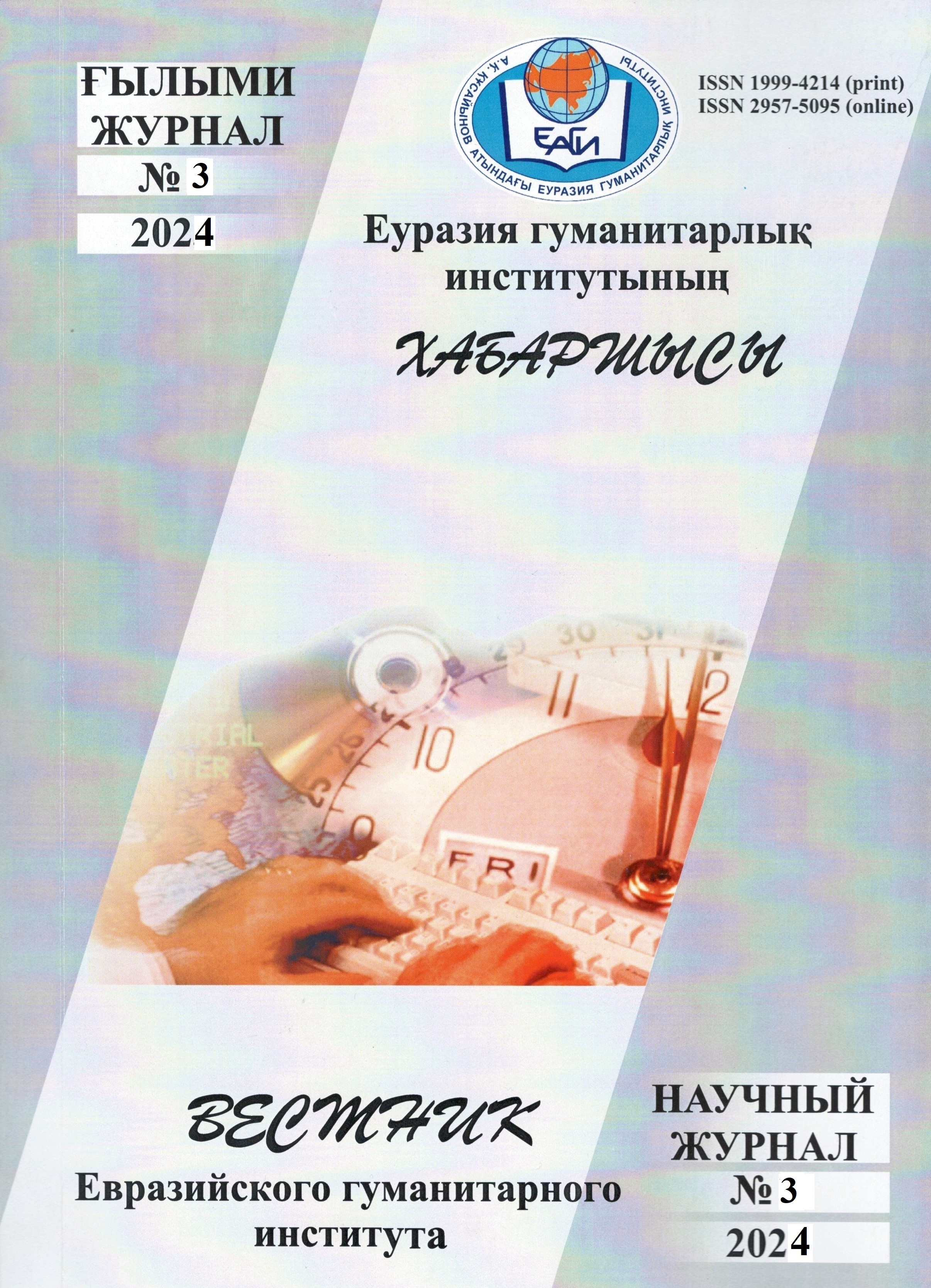THE EMOTION OF A COMMUNICANT IN TRANSLATION: THE FUNCTION AND SEMANTICS OF COLOR NAMES
Keywords:
somatic nonverbal means, color names, emotions, translation, «Abai Zholy», neurobiology, paralinguistics.Abstract
Nonverbal elements are additional, non-linguistic means of communication. In literary texts (original and translated) it is actively used to describe the internal experiences, emotions of the character, the attitude of the participants in the story towards each other, and the communicative situation. The main group of non-verbal means that cause difficulties in translation are the names of color terms that depict emotions. Changes in human skin color, which the article is devoted to, are universal phenomena, characteristic of all people, reflecting the internal state of the communicant, the appearance of his physiological state. The main goal of the study is to explain the cause of translation difficulties by showing the anthropocognitive and neurobiological motivation of color vocabulary denoting emotion in the novel “Abai Zholy”.
During the comparative analysis of translations, it was revealed that the names of colors in the Kazakh language representing the inner state of the character, such as «kogeru» (to get blue), «surlanu» (to get grey), «kokpenbek bop kety» (to get dark blue), «bozaru» (to get pale), «qup-qu bolu» (to get white), «qap-qara bop ketu» (to get black) were equivalent to only one lexeme "pale" in Russian, highlighting such linguistic facts, the author explains the root cause of difficulties in translation by the fact that each nation has its own intellectual instinct in recognizing emotions, which reflects paraemotional elements in the language at different levels.
The physiological motivation and psychological causators of the names of colors, which describe the change in emotion in the author’s narrative in the novel “Abai Zholy,” are explained on the basis of the experimental method, that is, on the basis of the results of neurobiological analysis conducted by foreign researchers.
As a result of the study, it was proven that the Kazakh people have a deep level of recognition of human emotions, therefore in the Kazakh language there are many more para-emotional words reflecting changes in facial tone than in Russian, each non-verbal element in the Kazakh language has a neurobiological basis, each people has a different level recognizing human emotions and conveying them in language, which also affects translation.
Although non-verbal means in works of fiction, including somatic non-verbal structures, are widely considered in paralinguistics, difficulties with their translation and insufficient attention to the causes of translation problems emphasize the relevance of the study. The article also uses the term "intellectual instinct" for the first time in relation to translation.
Keywords: somatic nonverbal means, color names, emotions, translation, "Abai Zholy", neurobiology, paralinguistics.


